Is trimming your pet’s nails important? Neglected nails can lead to pain and other serious issues, especially in dogs. Let’s learn more about dog nail trimming and clipping cat nails, including how to do it step by step!
The importance of trimming
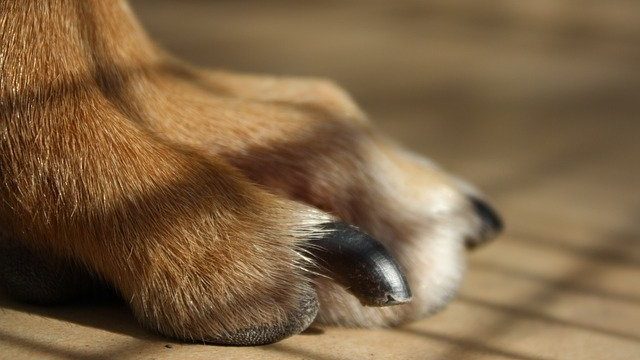
Overgrown nails might significantly decrease the quality of our pets’ daily life, especially for less active dogs that are unable to naturally wear the nails down. If the claws’ size is not even or is too long, it compromises the pet’s weight distribution and natural alignment. This can leave them more susceptible to injuries and make walking and running difficult and painful.
In severe cases, overgrown nails can curve and grow into the foot’s pad. Long nails can also get torn or split, which is once again very painful. Plus, depending on the severity, a hands-on exam and veterinary assistance may be required.
On the other hand, cats do not generally need their claws to be trimmed. You can still do it anyway, if your tiny tiger likes to sharpen their claws on that beloved and beautiful couch!
How to know if your pet’s nails need clipping
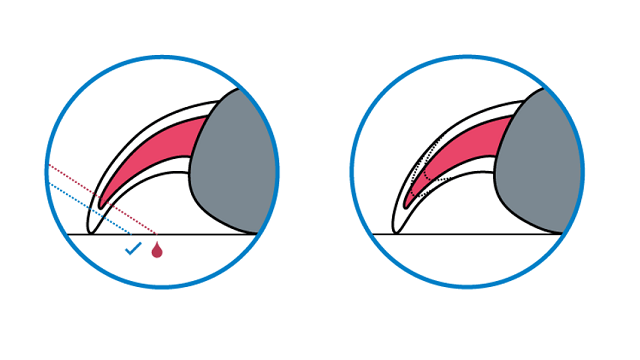
When a dog is standing the nails should not touch the ground. If you can hear your dog’s nails clicking or see them turn sideways, that is probably because their nails are too long and it’s time for a trim.
If your cat’s claws are too long you will notice that they will start to catch on the carpet or tap against hard floors. You may also be able to clearly see the claws, even while your cat is resting.
Dog nail trimming, step by step
Step 1: Prepare the equipment
- Dog nail clippers/scissors/grinder
- Flashlight (especially for dark nails)
- Optional: Paw balsam
- Biscuits/treats and extra cuddles
Step 2: Make your dog comfortable
Choose a spot where your pooch feels relaxed and make them comfortable.
Step 3: Define the cutting range
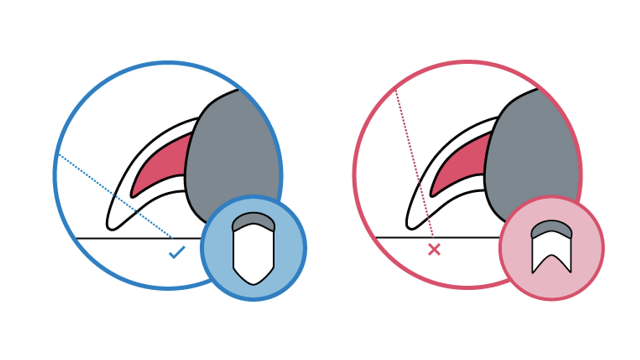
Be extra careful when deciding where to cut, as nails are supplied with blood. An accidental clip in the wrong spot leads to a lot of bleeding and some pain. The amount of blood scares any pet parent but there is nothing to worry about. It might take a little to stop though. It is easy to find the right cutting range in dogs with clear nails, but it can be a bit more difficult in dark nails. A flashlight might help you check the blood supply area, and avoid it.
The perfect cutting range ends right before the blood supply. Remember that front paws are usually the ones that need more trimming. If your dog has dewclaws do not forget to clip those, too.
Step 4: Trimming
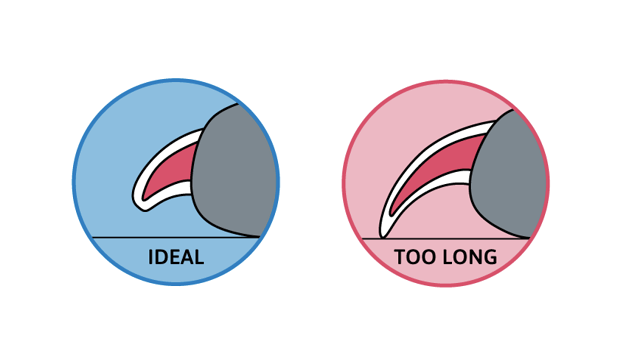
The trick here is to trim by taking small steps at a time! You should always cut parallel to the bottom and give plenty of rewards to keep your dog calm and happy. If there is no blood at the end of each cut point and your dog behaves like nothing has happened, the trimming went perfectly!
Afterwards you can soften the skin around with some paw balsam and your bestie’s manny paddy is finished.
Step 5: Reward your pup
Throughout the entire procedure, don’t forget to reward your dog with a special treat or extra cuddles. That way, they will associate this experience with something positive, which can reduce any possible fear and anxiety.
Clipping cat nails, step by step
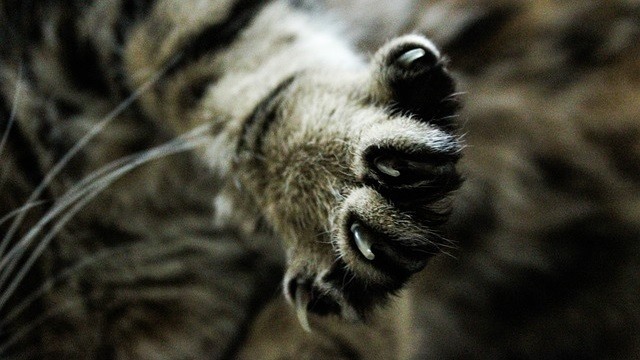
Step 1: Prepare the equipment
- Cat nail clippers/scissors
- Optional: Paw balsam
- Biscuits/treats and extra cuddles
Step 2: Make your cat comfortable
As with dogs, choose a spot your cat enjoys and where they feel relaxed and comfy. Sitting down and holding them against your body works quite good.
Step 3: Take the paw
Gently take the paw between your thumb and your index finger and slightly press the top of the toe to extend the claw outward. Repeat the maneuver for each digit.
Step 4: Define the cutting range
As previously explained in the dog section, the perfect clipping range ends right before the blood supply (red part of the nail).
Step 5: Trimming
As mentioned above, the important thing is to trim by taking one step at a time. Few cats remain patient for more than a few minutes, so take what you can get – there is no rush or need to cut all the nails at once.
Like in dogs, after the trimming you can soften the skin around with some paw balsam.
Step 6: Reward your cat
People in general might think that cats do not learn with treats as dogs do. I bet that you, as a cat parent, know that is not entirely true. So during the entire trimming session do not forget to reward your cat with a special treat or extra cuddles. Avoid at any cost shouting at them or holding them too tightly!
Things that can go wrong: bleeding
The first thing to learn here is not to panic if something goes wrong. If you cut the nail too much you will see blood on your pet’s nail right away. Try to stop the bleeding with styptic powder or ice cubes and prevent any dirt from getting in contact with the wound. This might take a while but there is no reason to run to your vet right away. If the blood flow does not stop in 30 minutes, you can either get in touch with our Maven vet team or contact your vet.
How often should the nails be trimmed

For very active canines who run all day long on varied surfaces, dog nail trimming may not be necessary as high mileage wears them down naturally. But for city or suburban dogs, things might happen a little differently. For those toy breeds who rarely leave their owner’s purse it is mandatory to regularly trim the nails. On the other hand, for those who usually walk on the leash the best approach is to closely monitor them, as some dogs might need regular trimming while others not.
That is because nail growth is also affected by genetic factors, breed, nutrition and activity level.
Don’t forget to cut the dew claws, though. Those will never wear down by themselves.
Conclusion
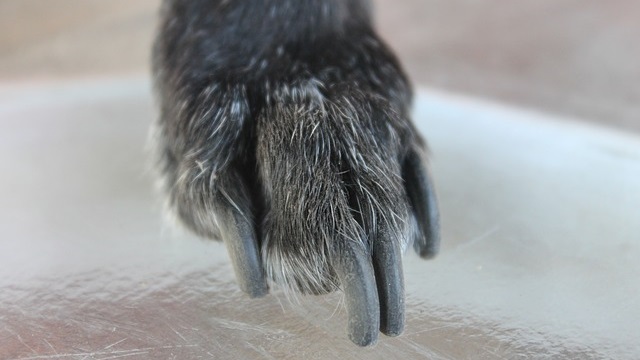
Overall, clipping cat nails is not necessary – and for outdoor cats, it is usually not recommended at all. They need their claws to defend themselves, hunt and climb. An indoor cat does not have the chance to wear the nails down outside, but can always use the scratching post to do the daily self-maintenance. However, if your cat tends to sharpen their claws everywhere in the house, you should, for your own sake, shorten them.
Senior cats also need some trimming since they are less active and tend to lose their scratching habits.
If not trimmed, nails can get excessively long and curve and penetrate into the pad, which is, as you already know, very painful.
A general rule for puppies and kittens is to start this routine when they are still young, in order for them to get used to the process. This can make dog nail trimming and clipping cat nails easier – or even a delightful activity! You can then perform it at least once a month. Just consider the above content regarding what affects the nail’s growth.
Furthermore, it is important for you to be aware that the more you trim the nails, the more the blood vessel will retreat back into the claw. That is why frequent nail trimming is highly essential, mainly in dogs.
Still having some doubts about the issue? Feel free to contact our vet team! 🙂
Maven is all about proactive pet care. Be your best friend’s best friend by giving them 24/7, high-quality, industry-leading vet care to improve their mental health, physical health and more. No more frantic googling or unneeded stressful visits to the vet – Maven helps you save hundreds while also ensuring your pet lives the best life possible. Get your kit now!




Just been reading for a couple of minutes and learned some useful stuff already, thanks!
Helpful stuff, thanks!
Just what i was looking for, thanks
Thanks for the info